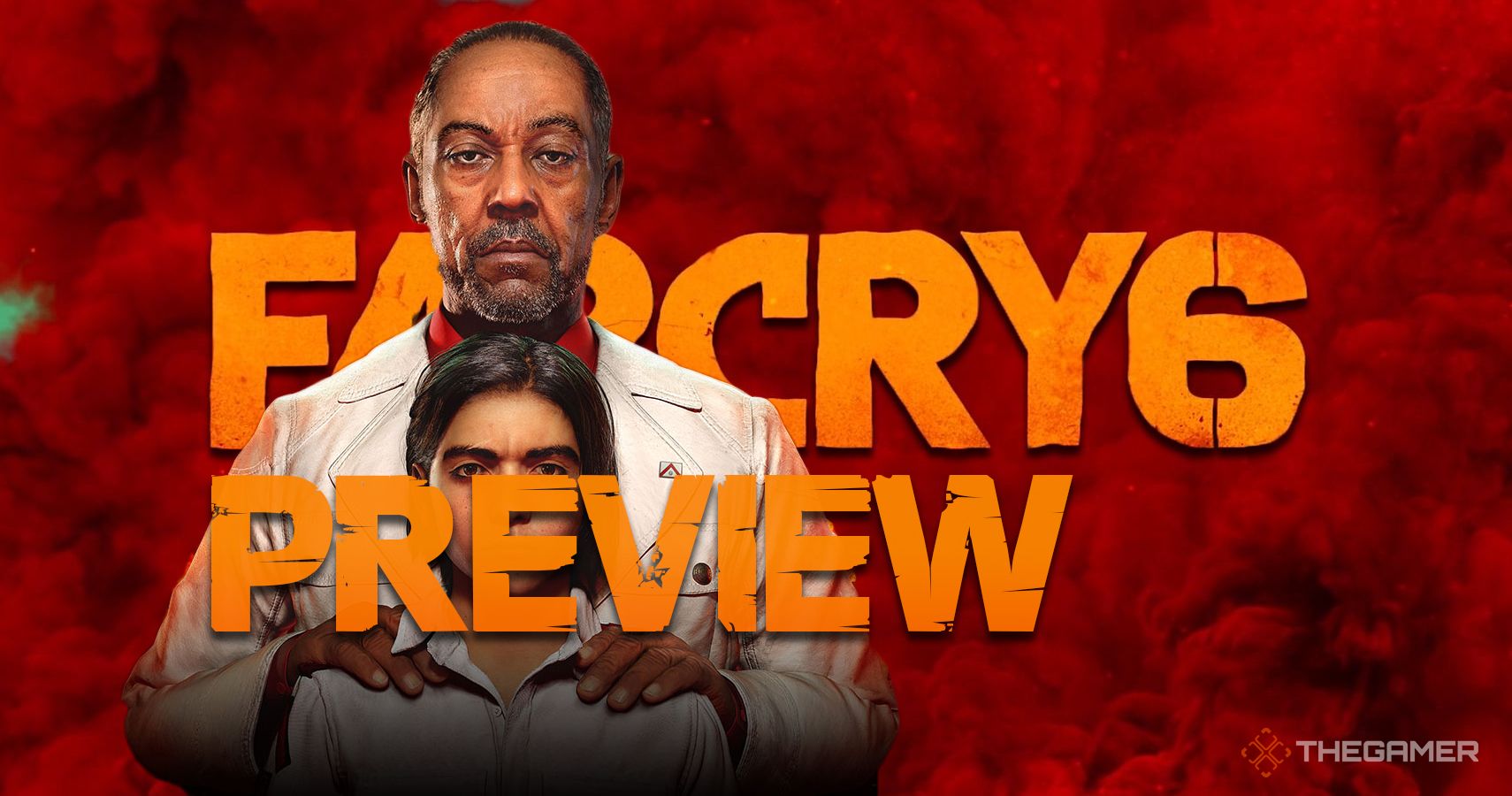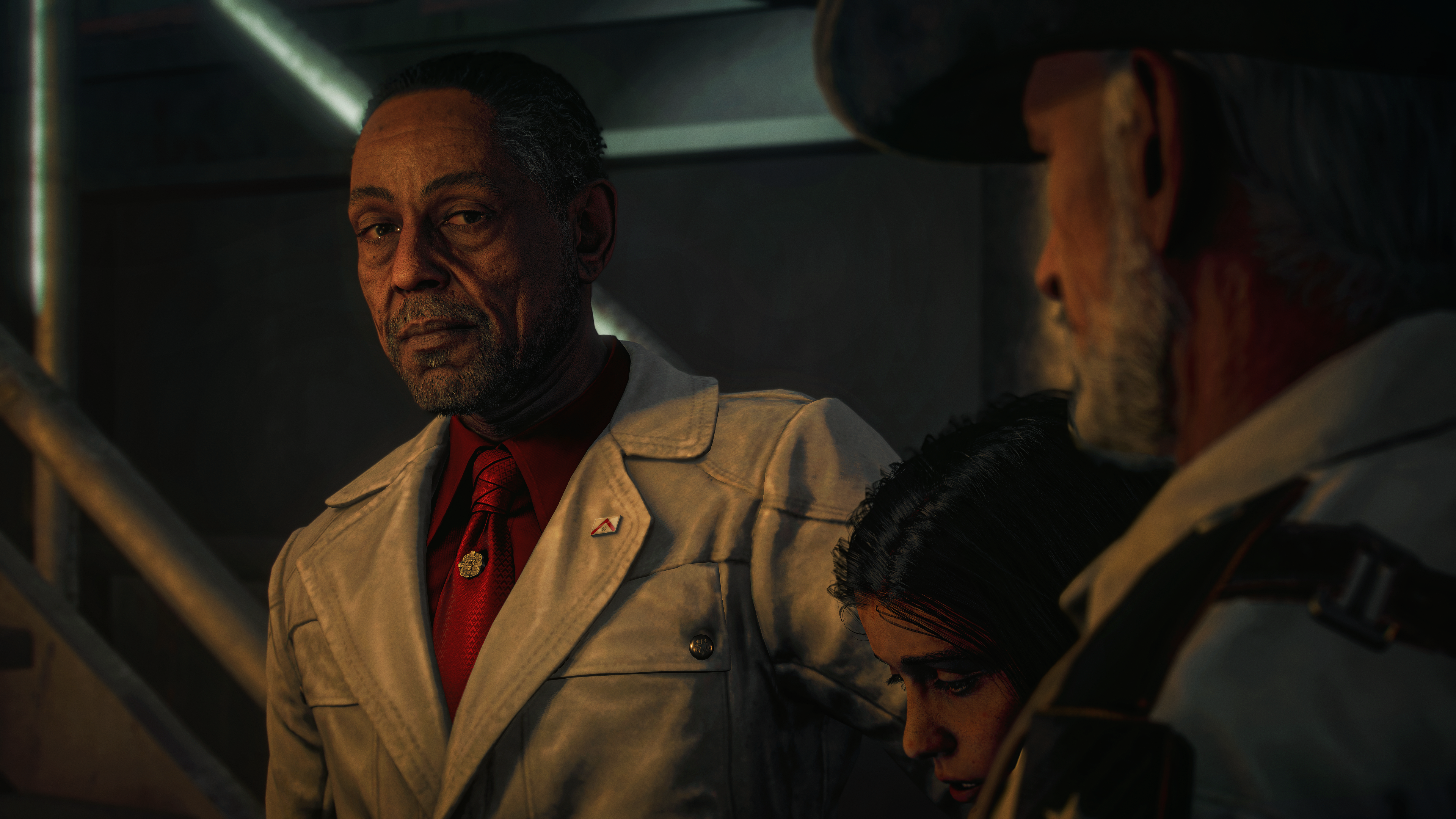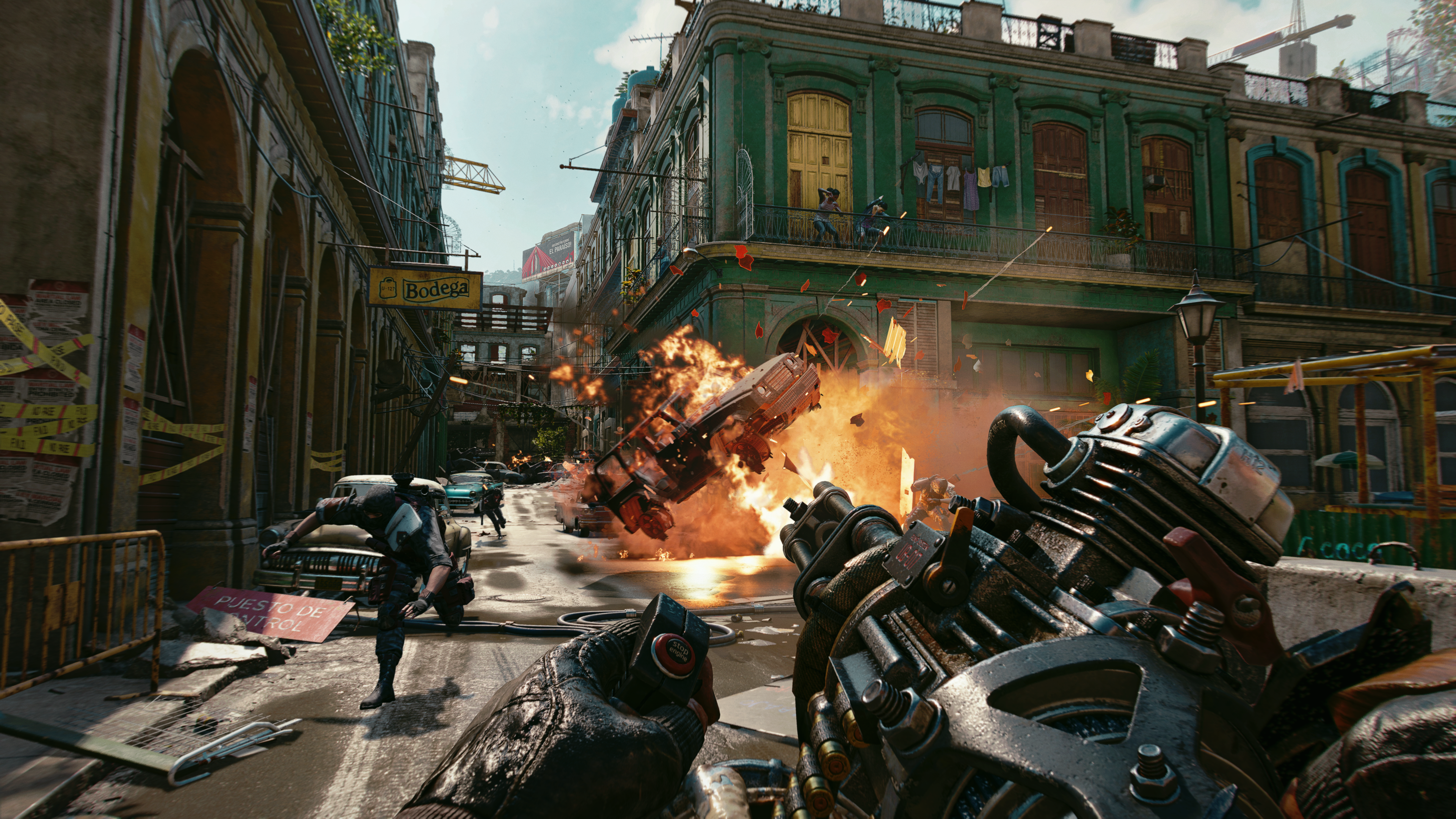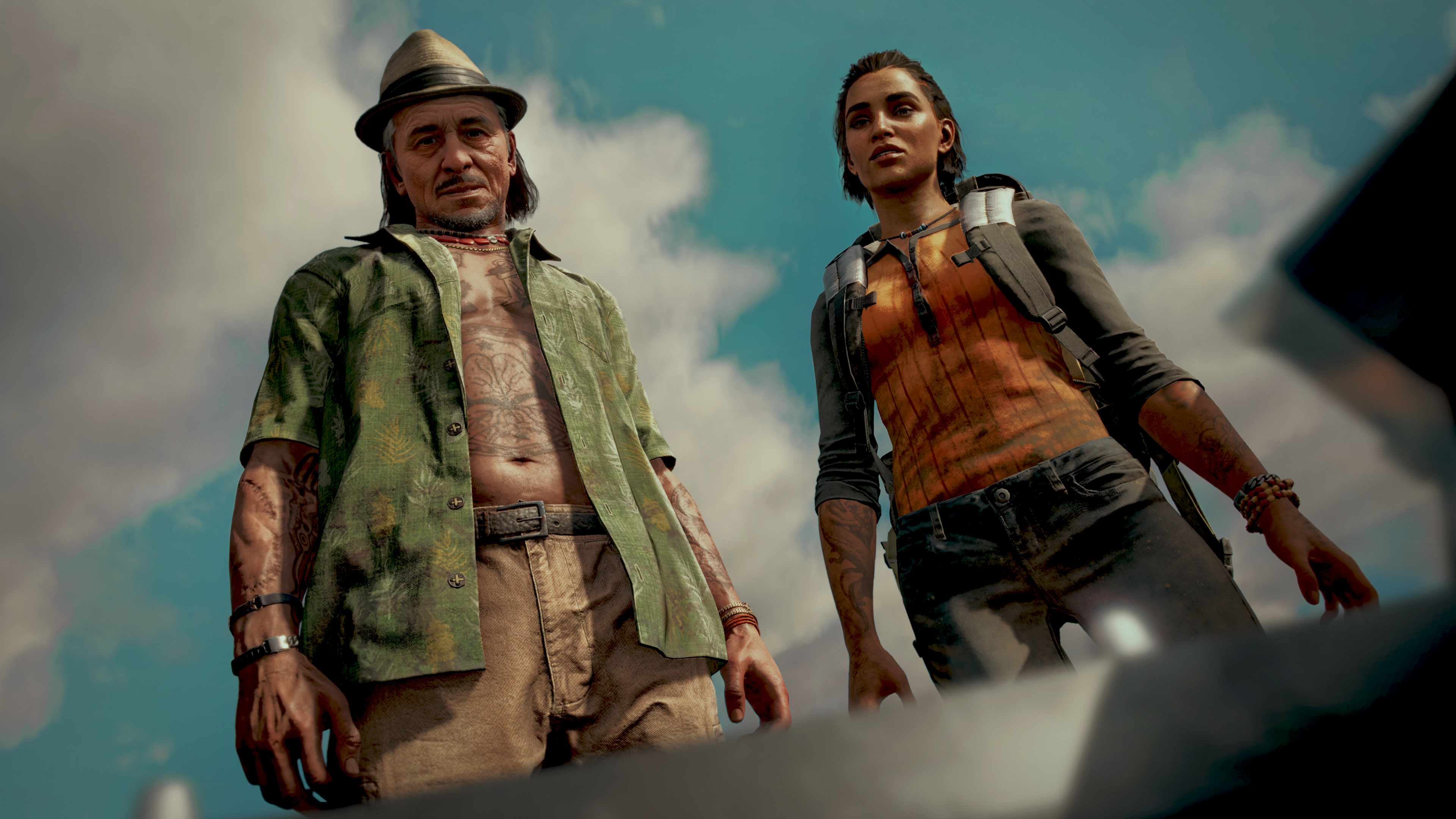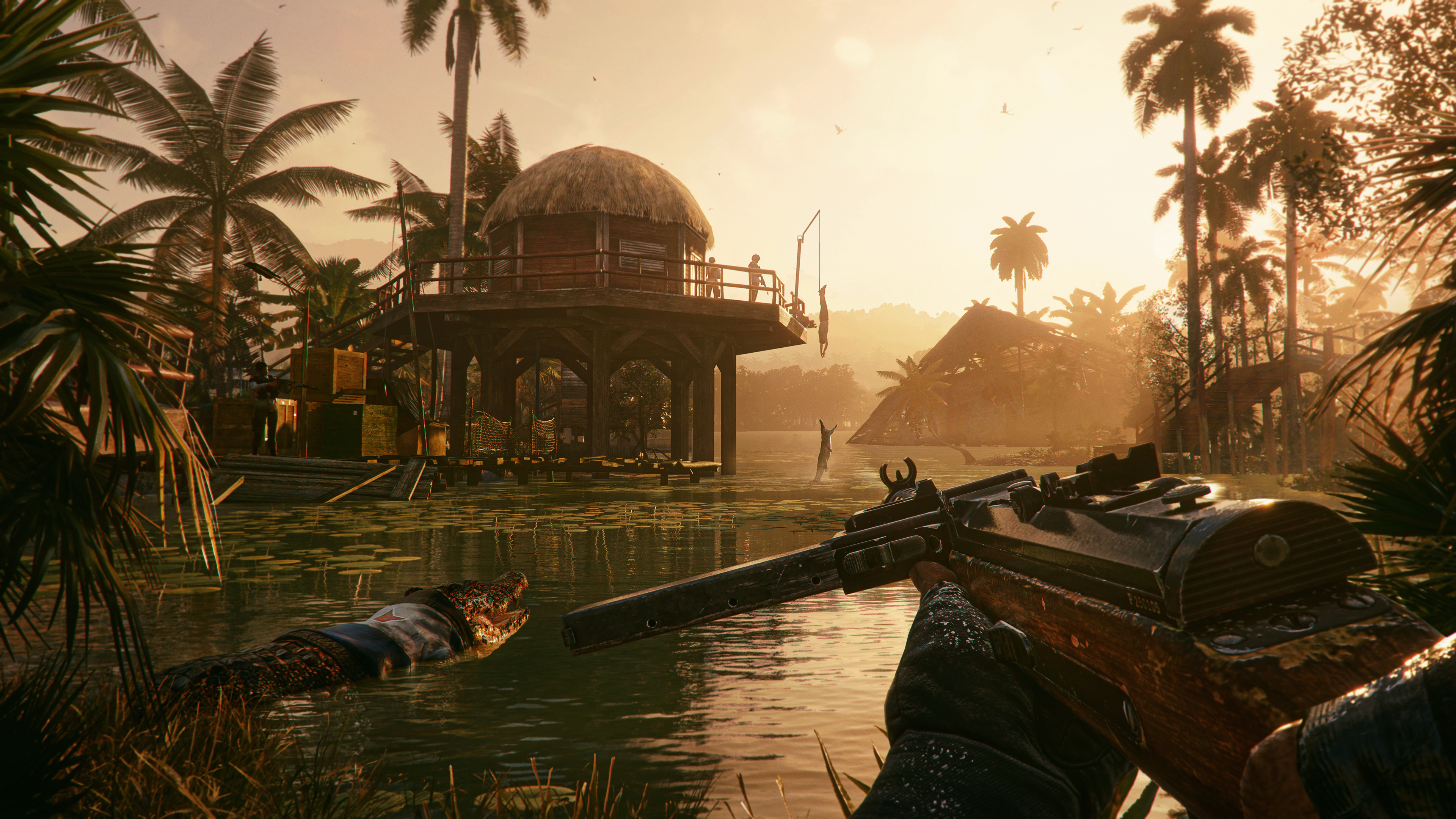Far Cry 6 is all about the “guerilla fantasy”, according to narrative director Navid Khavari - it’s about taking the experiences of real world freedom fighters and using them as inspiration to craft a tale of blood, violence, and revolution that, according to Ubisoft, “doesn’t want to make a political statement.” But the connection to real world politics is impossible to ignore, especially as the game crafts a fictional island that’s loosely based on Cuba and many of the events that helped define it over the years.
It feels a bit cheeky, like a get-out-jail-free card that diminishes much of what Far Cry 6 could be capable of if it decided to tackle the issues of fascism and dictatorship with a fierce, unblinking eye. Instead, it’s poised to once again be a power fantasy that combines a dark, foreboding narrative with an eccentric focus on destruction - a mixture the series is very familiar with.
Since Ubisoft seemingly isn’t willing to delve into the sociopolitical aspects of setting the game in a fictionalised version of Cuba, what does this “guerilla fantasy” mean for the gameplay side of things? In short - it seems like a worthwhile evolution, one that addresses the diminishing returns it was slowly falling victim to with a greater focus on exploration and freeform experimentation in battles. It looks promising - I just hope it’s more disparate elements don’t hold it back from greatness.
You play as Dani, a military dropout who was raised on the fictional island of Yara. It’s basically Cuba, but plastered with an imaginary name so we don’t get too suspicious. Throughout his or her young life (you can choose Dani’s gender), Dani’s home has been ravaged by war and politics, with revolutions shaping the direction of the nation’s future with evidently mixed results. Things have been falling apart for years, but now a new figure has stepped into the limelight to steer Yara towards a future that isn’t afraid to embrace fascist ideologies that punch down on the vulnerable.
It’s a bleak affair, but despite their homeland’s awful state, it’s still home, so Dani decides to stay and fight. This marks the start of a profound focus on narrative for Far Cry 6. Compared to its predecessor, where you controlled a lifeless redneck avatar, this game wants to make your place in its world matter. You have agency when exploring Yara, having been raised on its streets and watched as it fell to ruin. The driving force of the plot is taking back what's yours, building a makeshift resistance out of friends, family, and strangers who are willing to take up arms and work towards something.
Dani can return to guerilla camps - which see the action shift to a third-person perspective - as they build relationships with characters and talk with vendors, allowing you see your avatar and all of the customisation that has been put into it when it comes to armour and upgrades. It’s a nice change of pace from past games, which often allow the action to become woefully detached from the overarching narrative.
With Far Cry 6, I’m hoping things will be different, then. However, the laughable dissonance between a story that focuses on martial law and fascism and gameplay that has you recruiting wheelchair dogs and jacket-wearing crocodiles to fight alongside you remains disgustingly ignorant. I’m not sure others feel the same way, but I can’t take a tale that willingly leans into real world events while simultaneously asking us to engage in a super wacky explosive fun time seriously. The preview event was hands-off, but I could feel the tonal disparity through the screen, knowing that Ubisoft was repeating the same mistakes to an even more excessive degree.
Anton Castillo is the big bad this time around, portrayed by Giancarlo Esposito of Breaking Bad and The Mandalorian fame. He’s brilliant, and easily rivals the likes of Vaas Montenegro when it comes to feeling like a larger than life adversary for us to take on. He’s also far more than just a simple dictator, his own past and motivations being defined by prior revolutions. A continuous cycle of violence and power structure make him believe that bloodshed is the only answer to progress, even if it means sending his offspring along the exact same path.
Ubisoft told me that we’ll see Anton Castillo away from Dani’s perspective, implying we’ll either play as him, or even his son, Diego, in some capacity throughout the campaign. I imagine this will come in the form of flashback sequences, adding extra weight to his circumstances in an attempt to elicit sympathy. Anton watched his father be murdered at the hands of revolutionaries as a child, with this traumatic event informing everything he seeks to do in Far Cry 6, and how he intends to shape Yara in his father’s image. I just hope the story hold up when you inevitably murder him with your pet crocodile.
The setting is split into a variety of lush tropical ecosystems. Dense forests, dilapidated shanty towns, and prosperous cities are just a few of the locations to be found throughout the open world. Unlike in Far Cry 5, your place in the world is also more significant. As an outed rebel, Dani must make use of underground tunnels to navigate the larger cities, staying away from public attention and unwanted firefights to move around the map more efficiently.
Alternatively, you can put your weapons away and walk around Yara like a regular citizen. I’d still recommend avoiding close contact with guards, but for those who simply want to take in the sights without taking a bullet, this seems like a decent avenue. Previous games would have gaggles of enemies fire upon you within moments, which could grow tiresome, so it’s nice to see Ubisoft is providing a way to appreciate the series’ visual splendour without placing a gun in your hands. Of course, this is a Far Cry game, so you’ll be able to take over a selection of facilities and checkpoints to slowly but surely gain control of the region. These aren’t generic towers anymore though, instead taking the form of schools, factories, and shops that normal people can no longer access.
When you do pull out your guns, there will be 49 military-grade firearms to be found throughout Far Cry 6, most of which can be customised to your liking. Many of them are stupid, such as a CD launcher that fires discs at enemies, the track inside it distorting which each pull of the trigger. Ubisoft used the Macarena as an example, the iconic dance twisted into the bloody decapitation of an enemy as a pile of cheesy hits ploughed into him. If you want to play the campaign as a straight-laced mercenary, you probably can, and it would probably serve the unfolding narrative far better than murdering someone with the Macarena.
I have misgivings about Far Cry 6’s handling of political themes and how it’s taking inspiration from real world testimonies to craft its battle against martial law and fascism. The mechanical experience underneath it remains compelling, and represents a new benchmark for the series in terms of agency and ambition. I just wish Ubisoft wasn’t afraid to tell a story that talked about these ideas without constantly falling over itself, always landing squarely in the centre where it remains afraid to pick a side. You can’t have a “guerilla fantasy” without leaning into the purpose behind such a movement, one that is and always will be political. But there is a cute dog that can bite fascists, so it’s not all bad.

